Have you ever felt like juggling too many variables when writing PowerShell functions? You’re not alone. As our scripts grow more complex, so does the need to pass multiple pieces of information to our functions. But fear not! This article will teach us to pass multiple parameters to Functions in PowerShell.
Whether you’re a PowerShell newbie or a seasoned scripter looking to level up your game, understanding how to handle multiple parameters effectively is crucial. It’s the difference between writing clunky, hard-to-maintain code and crafting elegant, flexible scripts that can easily handle various inputs.
Passing Multiple Parameters to Functions in PowerShell
PowerShell functions become much more versatile when they can accept multiple parameters. This guide will walk you through various ways to pass multiple parameters to a function, from basic techniques to more advanced methods.
Basic Syntax
The most straightforward way to pass multiple parameters is to list them in the function definition:
function Get-PersonInfo {
param(
$Name,
$Age,
$City
)
Write-Output "$Name is $Age years old and lives in $City."
}
# Call the function
Get-PersonInfo -Name "John" -Age 30 -City "New York"Using Parameter Types and Validation
You can make your function more robust by specifying parameter types and adding validation:
function Get-PersonInfo {
param(
[Parameter(Mandatory=$true)]
[string]$Name,
[Parameter(Mandatory=$true)]
[int]$Age,
[Parameter(Mandatory=$false)]
[string]$City = "Unknown"
)
Write-Output "$Name is $Age years old and lives in $City."
}
# Call the function
Get-PersonInfo -Name "John" -Age 30 -City "New York"Passing Parameters by Position
PowerShell allows you to pass parameters by position:
function Get-PersonInfo {
param(
[Parameter(Mandatory=$true, Position=0)]
[string]$Name,
[Parameter(Mandatory=$true, Position=1)]
[int]$Age,
[Parameter(Mandatory=$false, Position=2)]
[string]$City = "Unknown"
)
Write-Output "$Name is $Age years old and lives in $City."
}
# Call the function by position
Get-PersonInfo "John" 30 "New York"Using a Hashtable
For functions with many parameters, you can use a hashtable:
function Get-PersonInfo {
param(
[Parameter(Mandatory=$true)]
[hashtable]$PersonData
)
$Name = $PersonData.Name
$Age = $PersonData.Age
$City = $PersonData.City
Write-Output "$Name is $Age years old and lives in $City."
}
# Call the function with a hashtable
$data = @{
Name = "John"
Age = 30
City = "New York"
}
Get-PersonInfo -PersonData $dataUsing Parameter Sets
Parameter sets allow you to create mutually exclusive sets of parameters:
function Get-PersonInfo {
[CmdletBinding(DefaultParameterSetName='NameAge')]
param(
[Parameter(Mandatory=$true, ParameterSetName='NameAge')]
[Parameter(Mandatory=$true, ParameterSetName='NameCity')]
[string]$Name,
[Parameter(Mandatory=$true, ParameterSetName='NameAge')]
[int]$Age,
[Parameter(Mandatory=$true, ParameterSetName='NameCity')]
[string]$City
)
if ($PSCmdlet.ParameterSetName -eq 'NameAge') {
Write-Output "$Name is $Age years old."
} else {
Write-Output "$Name lives in $City."
}
}
# Call the function with different parameter sets
Get-PersonInfo -Name "John" -Age 30
Get-PersonInfo -Name "John" -City "New York"Using Splatting
Splatting allows you to pass multiple parameters as a single unit:
function Get-PersonInfo {
param(
[string]$Name,
[int]$Age,
[string]$City
)
Write-Output "$Name is $Age years old and lives in $City."
}
# Use splatting to call the function
$params = @{
Name = "John"
Age = 30
City = "New York"
}
Get-PersonInfo @paramsThese methods provide various ways to pass multiple parameters to PowerShell functions, allowing you to choose the most appropriate approach for your specific needs.
Defining Functions with Multiple Parameters in PowerShell
In PowerShell, defining a function with multiple parameters is straightforward. Here’s a basic syntax:
function Your-Function-Name {
param (
$Parameter1,
$Parameter2,
$Parameter3
)
# Function body
}You can also use a more verbose syntax for better clarity and to specify parameter types:
function Your-Function-Name {
param (
[Parameter(Mandatory=$true)]
[string]$Parameter1,
[Parameter(Mandatory=$false)]
[int]$Parameter2 = 0,
[Parameter(Mandatory=$false)]
[array]$Parameter3
)
# Function body
}In this example:
$Parameter1is a mandatory string parameter$Parameter2is an optional integer parameter with a default value of 0$Parameter3is an optional array parameter
You can call this function like this:
Your-Function-Name -Parameter1 "Hello" -Parameter2 42 -Parameter3 @(1, 2, 3)Remember, when defining multiple parameters:
- Separate each parameter with a comma
- You can specify types and default values
- Use the
[Parameter()]attribute to set additional properties like whether it’s mandatory
This approach allows you to create flexible functions that can handle various inputs, making your PowerShell scripts more versatile and powerful.
Different Types of Parameters in PowerShell
PowerShell supports various parameter types, each serving different purposes. Here are some common ones:
- Mandatory Parameters
These are required for the function to run.
[Parameter(Mandatory=$true)]
[string]$RequiredParam- Optional Parameters
These have default values and aren’t required.
[Parameter(Mandatory=$false)]
[int]$OptionalParam = 0- Switch Parameters
These are boolean flags, often used for toggles.
[switch]$Verbose- Positional Parameters
These can be specified by position rather than name.
[Parameter(Position=0)]
[string]$FirstParam- ValueFromPipeline Parameters
These accept input from the pipeline.
[Parameter(ValueFromPipeline=$true)]
[string]$InputParam- ValidateSet Parameters
These only accept specific values.
[ValidateSet("Small", "Medium", "Large")]
[string]$Size- Array Parameters
These accept multiple values.
[array]$MultipleValuesChoose the appropriate parameter type based on your function’s needs. For example, use mandatory parameters for crucial information, switches for boolean flags, and ValidateSet when you need to restrict input to specific values.
Best Practices for Organizing and Naming Parameters in PowerShell
When working with multiple parameters, following best practices ensures your code is readable, maintainable, and user-friendly.
- Use Descriptive Names
Choose clear, descriptive names for your parameters. For example, use$FileNameinstead of$fn. - Follow Naming Conventions
Use PascalCase for parameter names:$TargetComputer, not$target_computer. - Order Parameters Logically
Place the most important or frequently used parameters first. - Group Related Parameters
Use parameter sets to group related parameters together. - Use Common Parameters
Leverage PowerShell’s common parameters like-Verboseor-Debugwhere appropriate. - Provide Default Values
Use default values for optional parameters to make your function easier to use. - Use Parameter Validation
Implement parameter validation to ensure input correctness. - Document Your Parameters
Use comment-based help to document each parameter’s purpose and expected input.
Example implementing these practices:
function Copy-FileToServer {
[CmdletBinding()]
param (
[Parameter(Mandatory=$true, Position=0)]
[ValidateNotNullOrEmpty()]
[string]$SourceFile,
[Parameter(Mandatory=$true, Position=1)]
[ValidateNotNullOrEmpty()]
[string]$DestinationServer,
[Parameter(Mandatory=$false)]
[ValidateSet("Overwrite", "Skip", "Append")]
[string]$ConflictAction = "Overwrite",
[switch]$CreateDestinationIfNotExist
)
# Function body
}This example demonstrates clear naming, logical ordering, parameter validation, and use of default values and switches.
Advanced Parameter Techniques in PowerShell
As you become more proficient with PowerShell, you can leverage advanced parameter techniques to create more flexible and powerful functions.
Parameter Sets
Parameter sets allow you to create mutually exclusive sets of parameters. This is useful when you have parameters that can’t be used together.
function Get-User {
[CmdletBinding(DefaultParameterSetName='Name')]
param (
[Parameter(Mandatory=$true, ParameterSetName='Name')]
[string]$Name,
[Parameter(Mandatory=$true, ParameterSetName='ID')]
[int]$ID
)
if ($PSCmdlet.ParameterSetName -eq 'Name') {
# Logic to get user by name
} else {
# Logic to get user by ID
}
}This function allows users to search for a user by either name or ID, but not both simultaneously.
Dynamic Parameters
Dynamic parameters are created at runtime based on certain conditions. They’re particularly useful when the available parameters depend on the value of other parameters.
function Get-DynamicParam {
[CmdletBinding()]
param (
[Parameter(Mandatory=$true)]
[string]$ParamType
)
DynamicParam {
if ($ParamType -eq 'Number') {
$attributes = New-Object System.Management.Automation.ParameterAttribute
$attributes.Mandatory = $true
$attributeCollection = New-Object System.Collections.ObjectModel.Collection[System.Attribute]
$attributeCollection.Add($attributes)
$dynParam = New-Object System.Management.Automation.RuntimeDefinedParameter('Value', [int], $attributeCollection)
$paramDictionary = New-Object System.Management.Automation.RuntimeDefinedParameterDictionary
$paramDictionary.Add('Value', $dynParam)
return $paramDictionary
}
}
process {
if ($ParamType -eq 'Number') {
$Value = $PSBoundParameters['Value']
"You entered the number: $Value"
}
}
}This function creates a dynamic ‘Value’ parameter of type int only when ‘ParamType’ is set to ‘Number’.
These advanced techniques allow you to create more sophisticated functions that adapt to different scenarios and user inputs.

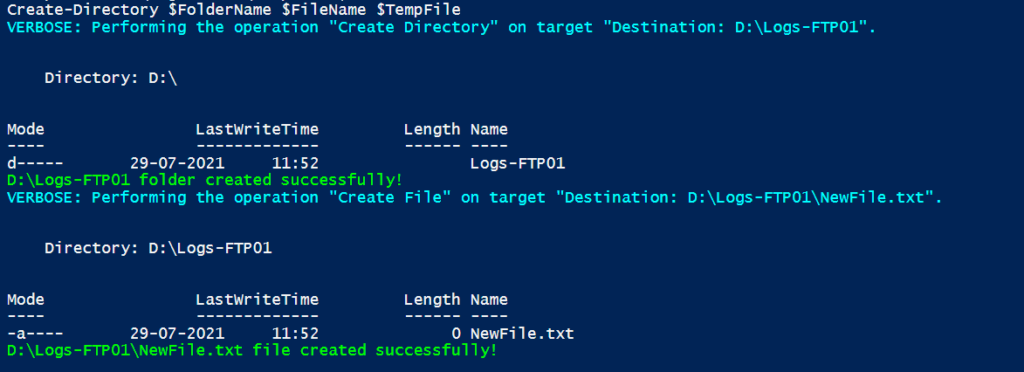
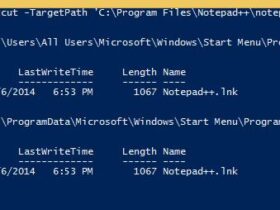
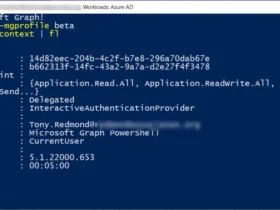
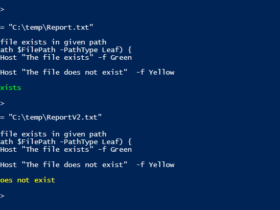
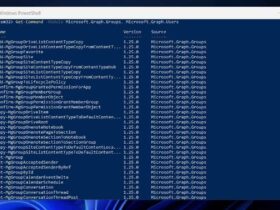
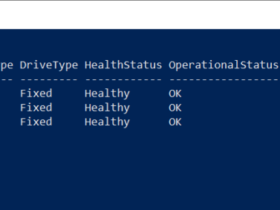
Leave a Reply
View Comments